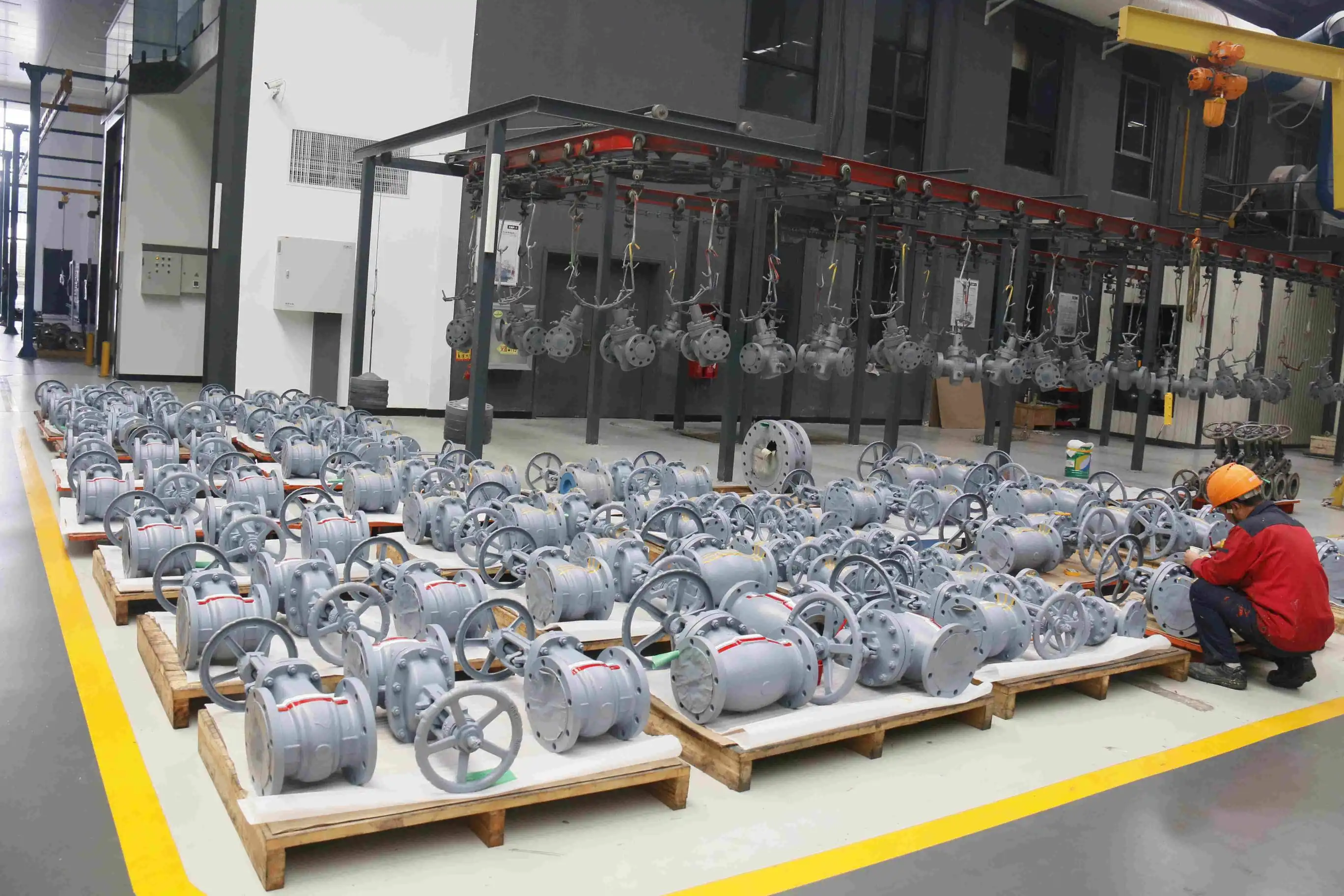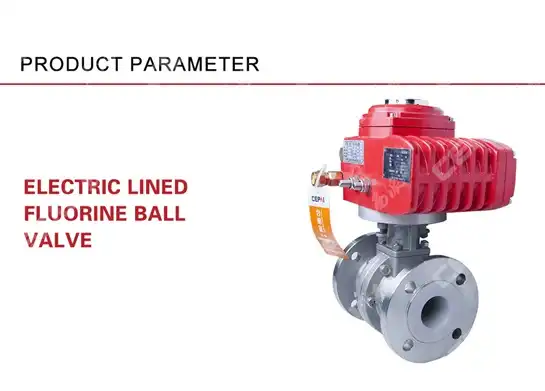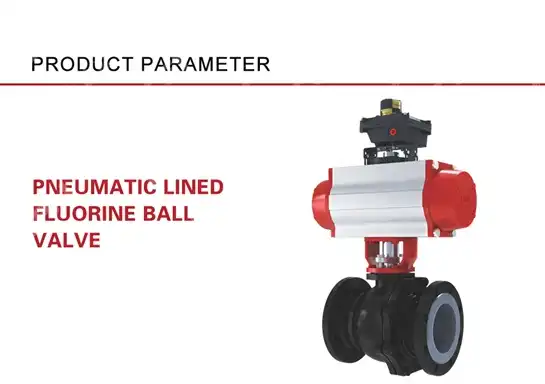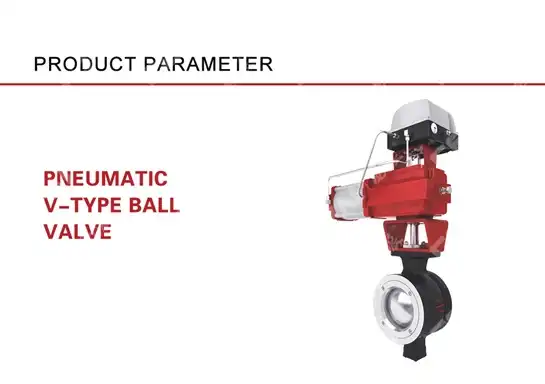Multi-Type Pneumatic O-Type Ball Valve vs Standard: Buyer’s Comparison
Selecting the wrong valve configuration can lead to production downtime, excessive maintenance costs, and compromised system safety in critical industrial applications. When evaluating Multi-Type Pneumatic O-Type Ball Valve options against standard configurations, buyers face critical decisions that directly impact operational efficiency, long-term reliability, and total cost of ownership. This comprehensive buyer's comparison examines the fundamental differences between multi-type pneumatic O-type ball valves and standard alternatives, helping procurement professionals make informed decisions based on application requirements, performance characteristics, and financial considerations.
Understanding Multi-Type Pneumatic O-Type Ball Valve Technology
The Multi-Type Pneumatic O-Type Ball Valve represents an advanced fluid control solution engineered for demanding industrial applications where precision, reliability, and operational flexibility are paramount. Unlike conventional manual ball valves, pneumatic actuation systems provide automated control capabilities that respond to process conditions in real-time, eliminating human error and enabling integration with sophisticated control systems. The O-type designation refers to the ball's circular bore design, which creates a full-port configuration matching the pipeline diameter, thereby minimizing pressure drop and maximizing flow capacity throughout the valve body. Modern Multi-Type Pneumatic O-Type Ball Valve assemblies incorporate modular design principles that accommodate various actuator configurations, mounting options, and accessory packages within a standardized valve platform. This versatility enables buyers to customize solutions according to specific application requirements without compromising interchangeability or requiring extensive inventory management. The pneumatic actuation mechanism converts compressed air energy into rotational motion, typically operating within pressure ranges of four to seven bar, delivering consistent quarter-turn operation regardless of valve size or line pressure conditions.
-
Core Design Features and Construction Standards
Advanced Multi-Type Pneumatic O-Type Ball Valve designs incorporate bidirectional sealing capabilities through precision-machined seat assemblies that maintain tight shutoff across extreme temperature ranges and challenging media conditions. The full-bore O-type configuration ensures laminar flow characteristics, reducing turbulence and minimizing erosion potential compared to reduced-bore alternatives. Premium valve bodies utilize investment casting or forging processes that eliminate porosity issues while delivering superior mechanical properties essential for high-pressure service applications. Seal technology selection significantly influences valve performance and service life expectations. Modern Multi-Type Pneumatic O-Type Ball Valve assemblies employ advanced elastomeric compounds and reinforced PTFE formulations engineered to withstand aggressive chemicals, extreme temperatures, and abrasive particles encountered in petrochemical processing, power generation, and heavy industrial applications. The pneumatic actuator housing typically features anodized aluminum or corrosion-resistant composite construction protecting internal components from environmental degradation while maintaining lightweight characteristics that simplify installation and reduce structural support requirements.

Standard Ball Valve Configurations: Traditional Approach Analysis
Standard ball valve configurations represent time-tested solutions that have served industrial applications for decades through straightforward design principles and proven operational reliability. These conventional assemblies typically feature manual operation through lever handles or gear operators, requiring direct human interaction for position changes. Standard port ball valves incorporate reduced-bore designs where the ball opening measures approximately one pipe size smaller than the connection diameter, creating controlled flow restriction and pressure drop characteristics suitable for specific applications requiring flow modulation or isolation functionality. The simplified construction of standard ball valves translates to lower initial acquisition costs and reduced maintenance complexity compared to automated alternatives. Manual operation eliminates dependency on external power sources, whether pneumatic, hydraulic, or electrical, making standard configurations particularly attractive for remote installations or applications where utility availability presents challenges. However, this operational simplicity comes with limitations regarding response speed, control precision, and integration capabilities within automated process control architectures.
-
Operational Limitations and Application Constraints
Standard manual ball valves require physical access for operation, potentially creating safety concerns when valves are located in hazardous environments, elevated positions, or confined spaces. The quarter-turn operation demands immediate force application that can stress valve components and create water hammer effects in liquid systems if not carefully executed. Manual actuation also introduces variability in operating speed and consistency, as different operators may handle valves differently, potentially affecting process stability and repeatability. Response time limitations inherent to manual operation prevent standard ball valves from serving emergency shutdown applications or rapid response scenarios where millisecond-level actuation becomes critical for process safety or product quality protection. The absence of position feedback mechanisms in basic manual configurations eliminates remote monitoring capabilities, requiring physical inspection to verify valve status and introducing uncertainty into process control schemes. These operational constraints significantly limit standard ball valve applicability in modern automated facilities where integration, reliability, and documented performance become regulatory requirements.
Performance Comparison: Pneumatic Automation Advantages
The Multi-Type Pneumatic O-Type Ball Valve delivers substantial performance advantages over standard configurations through automated actuation that enables precise control, rapid response, and seamless integration with distributed control systems. Pneumatic actuation provides consistent operating torque regardless of valve position, eliminating the variable force application characteristic of manual operation. This consistency ensures uniform seat engagement, optimizing seal performance and extending service life through reduced mechanical wear patterns. Actuation speed represents a critical differentiator where Multi-Type Pneumatic O-Type Ball Valve assemblies excel, typically completing full quarter-turn cycles within two to five seconds depending on actuator sizing and air supply parameters. This rapid response capability proves essential for emergency isolation scenarios, batch process control applications, and safety instrumented systems requiring documented reaction times. Standard manual valves, conversely, depend entirely on operator response, introducing delays ranging from several seconds to minutes based on accessibility, training, and situational awareness factors.
-
Integration Capabilities and Control Flexibility
Modern Multi-Type Pneumatic O-Type Ball Valve packages support comprehensive instrumentation including position transmitters, limit switches, solenoid valve assemblies, and fieldbus communication modules that enable sophisticated control strategies impossible with manual alternatives. These integration capabilities facilitate predictive maintenance programs through actuator cycle counting, torque monitoring, and diagnostic data collection that identifies developing issues before failure occurs. Remote operation eliminates hazardous area access requirements, improving personnel safety while enabling centralized control room supervision of distributed valve populations. The pneumatic system inherently provides fail-safe functionality through spring-return actuator configurations that automatically position valves to predetermined safe states upon air supply interruption, meeting critical safety requirements in emergency shutdown applications. Modulating control capabilities, achieved through positioner integration, transform the Multi-Type Pneumatic O-Type Ball Valve into a variable flow control device suitable for continuous process regulation rather than simple on-off isolation service. This operational flexibility enables a single valve design to address multiple application scenarios, simplifying spare parts inventory and maintenance training requirements across facility operations.

Economic Analysis: Total Cost of Ownership Considerations
Initial acquisition costs clearly favor standard ball valve configurations, with manual assemblies typically costing thirty to fifty percent less than comparable Multi-Type Pneumatic O-Type Ball Valve packages when evaluating equivalent pressure ratings and material specifications. However, comprehensive total cost of ownership analysis must incorporate installation expenses, operational costs, maintenance requirements, and productivity impacts throughout the valve's service life. Pneumatic automation eliminates ongoing labor costs associated with manual valve operation, particularly significant in facilities operating continuous processes or requiring frequent valve cycling. Installation economics shift favorably toward Multi-Type Pneumatic O-Type Ball Valve solutions when considering auxiliary infrastructure requirements. While pneumatic systems require compressed air distribution, most industrial facilities maintain established instrument air systems serving multiple users, making incremental connections economically attractive. Manual valve accessibility requirements often necessitate platform construction, ladder installations, or structural modifications that substantially increase project costs beyond valve purchase prices. Remote pneumatic actuation flexibility enables optimal valve placement based on process requirements rather than operational accessibility constraints.
-
Maintenance Economics and Reliability Impact
Multi-Type Pneumatic O-Type Ball Valve assemblies demonstrate superior reliability characteristics through consistent operation that eliminates human error variables and mechanical stress associated with improper manual handling. Predictive maintenance capabilities enabled through integrated diagnostics reduce unplanned downtime by identifying developing issues during scheduled maintenance windows rather than catastrophic failure events. The modular construction typical of pneumatic valve packages facilitates rapid actuator replacement or refurbishment without disturbing process piping, minimizing maintenance duration and associated production losses. Energy consumption considerations favor pneumatic actuation in facilities maintaining instrument air systems for multiple applications, as incremental valve operation costs remain negligible compared to production value. However, installations lacking compressed air infrastructure must evaluate compressor installation, power consumption, and system maintenance costs against alternative actuation technologies. Standard manual valves eliminate ongoing energy costs entirely, making them economically attractive for infrequently operated isolation applications where automation benefits cannot justify infrastructure investments or operational complexity.
Conclusion
Multi-Type Pneumatic O-Type Ball Valve technology delivers measurable advantages over standard configurations through automated operation, superior control precision, safety enhancements, and integration capabilities that align with modern industrial automation requirements. While initial investment levels exceed manual alternatives, total cost of ownership analysis frequently justifies pneumatic solutions through labor savings, reliability improvements, and operational flexibility that enhance facility productivity and safety performance across demanding applications.
Cooperate with CEPAI Group Co., LTD.
CEPAI Group Co., LTD., established in 2009 with 56,000 square meters of advanced manufacturing facilities in Jiangsu Province, stands as a nationally recognized high-tech enterprise specializing in high-performance valve solutions for oil and gas, petrochemical, and power generation industries. Our comprehensive certification portfolio including API Q1, API 6A, API 6D, ISO 9001, and SIL certifications demonstrates unwavering commitment to quality excellence that has earned supplier qualifications with PetroChina, Sinopec, CNOOC, and leading international engineering companies.
As a China Multi-Type Pneumatic O-Type Ball Valve manufacturer, CEPAI operates the Asia Pacific region's longest high-precision intelligent manufacturing flexible production line, representing 156 million yuan in advanced equipment investments that deliver exceptional dimensional accuracy and performance consistency. Our China Multi-Type Pneumatic O-Type Ball Valve factory maintains CNAS accredited testing laboratories and Jiangsu Province Engineering Research Centers supporting continuous innovation in fluid control technology. Whether you require China Multi-Type Pneumatic O-Type Ball Valve wholesale quantities or customized solutions, our technical team provides comprehensive pre-sales consultation, engineered valve selection, installation support, and lifetime service guarantees backed by AR-enabled remote assistance capabilities.
Experience High Quality Multi-Type Pneumatic O-Type Ball Valve solutions engineered to exceed international standards while delivering competitive Multi-Type Pneumatic O-Type Ball Valve price advantages through intelligent manufacturing efficiency. As your trusted China Multi-Type Pneumatic O-Type Ball Valve supplier, CEPAI offers Multi-Type Pneumatic O-Type Ball Valve for sale with complete material traceability, dimensional verification, and performance testing documentation ensuring regulatory compliance and operational confidence. Contact our engineering team at cepai@cepai.com to discuss your specific application requirements and discover how CEPAI's proven expertise, advanced manufacturing capabilities, and customer-focused service approach can optimize your fluid control systems while reducing total cost of ownership.
References
1. American Petroleum Institute. "Specification for Wellhead and Tree Equipment" (API Specification 6A). American Petroleum Institute Standards Department.
2. International Society of Automation. "Functional Safety: Safety Instrumented Systems for the Process Industry Sector" (ISA-84.00.01). ISA Standards and Practices Department.
3. Valve Manufacturers Association. "Control Valve Seat Leakage Standards and Testing Procedures" (VMA Technical Report). Valve Manufacturers Association Engineering Division.
4. International Organization for Standardization. "Industrial Valves - Part-turn Actuation Attachments" (ISO 5211). ISO Technical Committee on Industrial Valves.
_1746598563385.webp)
Get professional pre-sales technical consultation and valve selection services, customized solution services.

About CEPAI


